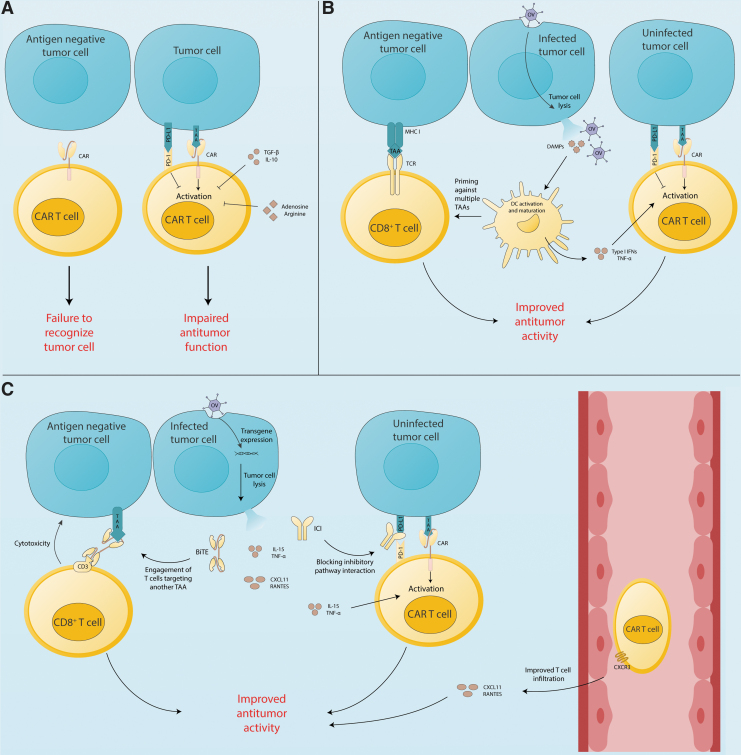Figure 1.
Opportunities for synergy between OVs and CAR T cells. (A) CAR T cells recognize antigen-expressing tumor cells, but immune checkpoints (e.g., PD-1), immunosuppressive cytokines (e.g., IL-10 and TGF-β), and inhibitory metabolites (e.g., adenosine and arginine) impair CAR T cell function. Furthermore, antigen-negative tumor cells are not killed by CAR T cells. (B) OV particles infect tumor cells leading to tumor cell lysis and the release of DAMPs, as well as OV virions that infect more tumor cells. DAMPs promote DC activation, maturation, and priming of a polyclonal host T cell response. DCs then release proinflammatory cytokines (e.g., TNF-α) that support CAR T cell function. (C) Armed OVs cause tumor cells to release immunostimulatory agents like BiTEs, ICIs, chemokines (e.g., CXCL11), and proinflammatory cytokines (e.g., IL-15). BiTEs redirect endogenous T cells against a different antigen than the CAR, countering antigen escape. ICIs and proinflammatory cytokines promote CAR T cell function. Chemokines and cytokines augment CAR T cell infiltration of the tumor. BiTE, bispecific T cell engager; CAR, chimeric antigen receptor; DAMP, damage-associated molecular pattern; DC, dendritic cell; ICI, immune checkpoint inhibitor; IL, interleukin; OV, oncolytic virus; PD-L1, programmed death ligand-1; TNF-α, tumor necrosis factor-α.

